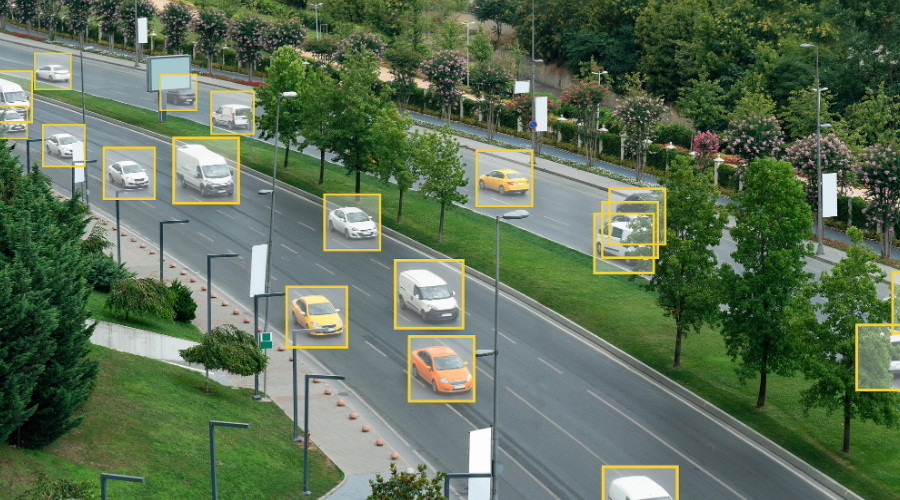What is Smart City Surveillance?

Collecting Data to Improve Efficiencies and Quality of Life
Smart Cities use a variety of Internet-connected (IoT) technologies and databases to improve the efficiency of city services. In general, their goals are to save money — by improving efficiency and reducing waste – and improve constituent services, public safety, environmental conditions, and the overall quality of life for residents, businesses, and visitors. Smart Cities rely on critical infrastructure data from numerous agencies to stay on top things like light usage, water leaks, traffic volume, and real-time parking spot availability, and leverage existing surveillance investments – powered by video analytics – to make data driven decisions for their communities.
Getting the Most out of Video Surveillance
Video surveillance (CCTV) cameras, which are commonly used by urban police and transportation departments, can be part of the smart city technology suite – especially if cities also use video analytics software to derive operational intelligence from the footage. Video contains a wealth of valuable information, but most footage is never reviewed and – even if it was manually reviewed – human analysts are rarely able to effectively comprehend or analyze all the data that lies within. Video content analytics technology solves that problem by processing video data and identifying, classifying, and indexing objects in video footage, such as cars, trucks, buses, motorcycles, bicycles, women, men, children, and animals. Driven by Deep Learning and Artificial Intelligence, such software makes video searchable, actionable and quantifiable.
Surveillance is Not Just for Security
Video analytics software makes it possible to effectively review footage, respond to evolving situations, and research trends.
- Powerful search filters based on extracted and indexed video metadata make it easy for analytics operators to quickly and accurately search through high volumes of video footage, across multiple cameras, in a matter of minutes or seconds instead of hours.
- System operators improve situational awareness of unfolding incidents, by configuring real-time, rule-based alerts using the video metadata. Operators can be notified about objects dwelling, people-counts, and line-crossings, as well as when objects of interest are detected using license plate or face recognition.
- The video content collected over time empowers management teams to obtain valuable operational intelligence from video, and analyze dashboard reports about object behaviors, interactions, demographics, and traffic trends.
Multiple City Agencies Benefit from VCA
By expanding the applications of video surveillance beyond security with intelligent analytics, video content analytics technology transform video to a cross-functional resource that can be shared across organizations and municipal governments for various use cases.
The technology has numerous benefits to police; operators can conduct forensic review of footage to find suspects, conduct an appearance similarity search for a missing person, or use pedestrian heatmaps to help determine which property on a busy street is drug den. Law enforcement can also set up real-time face recognition and license plate alerts for images that are on a digital watchlist, or receive notifications to identify crowds and traffic hotspots as they are forming.
Another important application for many cities is increasing situational awareness ahead of expected protests and unexpected unrest. The ability to alert for growing people counts can help law enforcement stay ahead of potential crowding and violence and ensure that adequate support is available to manage crowds when needed. By proactively detecting and responding to crowding, cities can preserve order and public safety before incidents occur.
While these are all valuable applications of video analytics technology, video analytics can also provide exponential value to other city agencies like public health, urban planning, public works, and transportation.
- Transportation departments can make better operational decisions with quantifiable video data regarding the demographics of their ridership and peak usage. Additionally, transit systems can tackle pressing issues – like suicide jumpers on the subway tracks – by defining rule-based alerts across metro platforms and improving safety infrastructure by understanding movement and behavior patterns.
- Using a variety of analytics, city property managers can monitor building occupancy or foot traffic in city-owned buildings, such as schools, government offices, community centers, and
- Municipalities can use video content analytics to monitor traffic (vehicles, pedestrians, bicycles, scooters) over time. Planners can quantify and classify vehicles and pedestrians, discover movement patterns, and identify traffic hotspots so they can optimize traffic flows. Improved traffic leads to safer, happier residents, businesses, and visitors.
- While the COVID-19 pandemic is solidly in the past, public health departments can leverage video analytics to establish proactive pandemic protocols. For instance, traffic and footfall trends can supply emergency planners with data needed to set benchmarks for social distancing and mask wearing in areas prone to congestion.
Smart Cities everywhere are implementing video analytics to maximize their existing investment in CCTV networks and drive intelligent decision-making. Because so many agencies can derive value from video data, video analytics is a logical and cost-effective technology which increases efficiency, streamlines operations, and improves public health and safety.
Interested in learning how real cities are transforming their video into impact? Check out Analytics in Action: Safe Cities
Editor’s note: This post was originally published in March 2021, and has been refreshed and updated for accuracy.
Signup to receive a monthly blog digest.